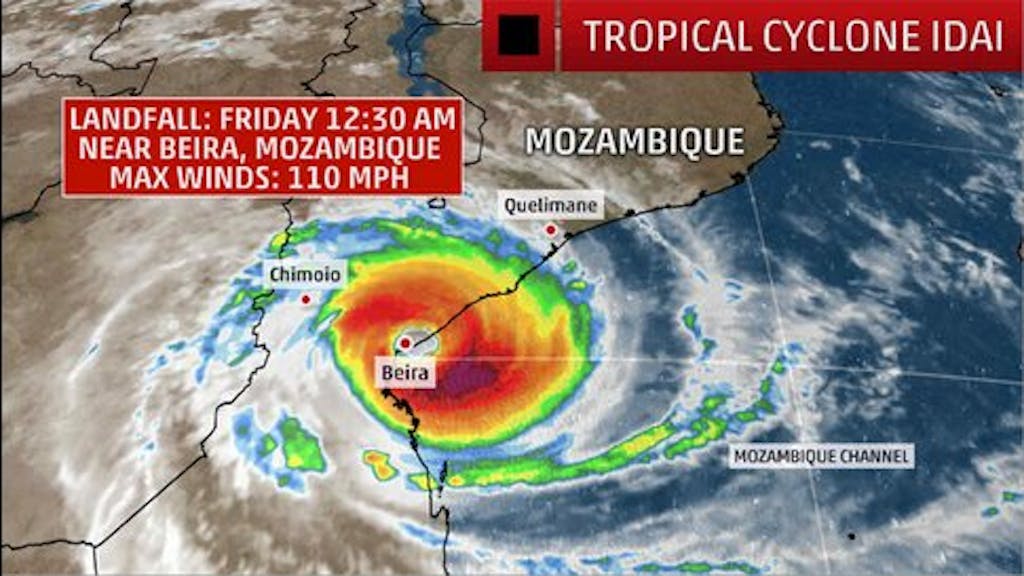Editor’s note: This post was last updated March 27, 2019.
A strong cyclone that hit southeastern Africa has caused widespread damage and dangerous flooding, leaving more than 1.8 million people in need in Mozambique. The storm may be one of the worst weather-related disasters ever to hit the Southern Hemisphere.

Cyclone Idai made landfall in Mozambique on March 14, before moving into the neighboring countries of Zimbabwe and Malawi as a Tropical Storm. An estimated three million have been affected by the cyclone, nearly two-thirds of them in Mozambique, and according to officials, the death toll in the country could rise above 1,000.
Donate to SUPPORT UN DISASTER RESPONSE
In Beira City, the fourth largest city in Mozambique located on the coast, more than 100,0000 women, men, and children are in urgent need of humanitarian aid after powerful winds and flooding destroyed homes, medical facilities, schools, crops, and more.
The storm hit following a week of heavy rains and flooding, making the region particularly vulnerable. As a spokesperson for the World Food Programme explained, “Tropical Cyclone Idai…has compounded destructive flooding that has already occurred as far inland as southern Malawi and eastern Zimbabwe.”
Humanitarian Aid Response
The UN and its humanitarian partners are mobilizing to support the three governments’ response. This includes providing food and cash assistance, airlifting supplies and medicines, and helping coordinate humanitarian aid.
On Saturday 16 March, WFP Aviation airlifted 2,000 boxes
of high-energy biscuits from Kenya to Beira, #Mozambique as food assistance to those affected by tropical #CycloneIdai.@WFPLogistics @WFP_Africa pic.twitter.com/sbge7bODON
— World Food Programme (@WFP) March 18, 2019
To provide critical — and urgent — emergency relief to those impacted in the three countries, UN humanitarian chief Mark Lowcock allocated $20 million from the United Nations’ Central Emergency Response Fund (CERF).
And on Monday, March 26, the UN launched a $281.7 million revised flash appeal for Mozambique, designating the disaster a “scale-up emergency”, which is the most severe designation. As Secretary-General António Guterres urged, “I call on the international community to fund these appeals quickly and fully so that aid agencies can urgently ramp up their responses.”
Early estimates show that WFP may need to provide 500,000 people with food assistance. Moreover, the Word Health Organization (WHO) anticipates health risks from flooding, as a spokesperson noted that “waterborne diseases and rise of airborne disease like malaria could also be expected.”
Here’s How You Can Help
Donate to the UN’s Central Emergency Response Fund (CERF) to support relief efforts for humanitarian crises and underfunded emergencies.
Funds from CERF will support emergency response efforts on the ground, helping to swiftly provide vital supplies, including food, shelter, clean water and sanitation, health care, and more.



 View All Blog Posts
View All Blog Posts

